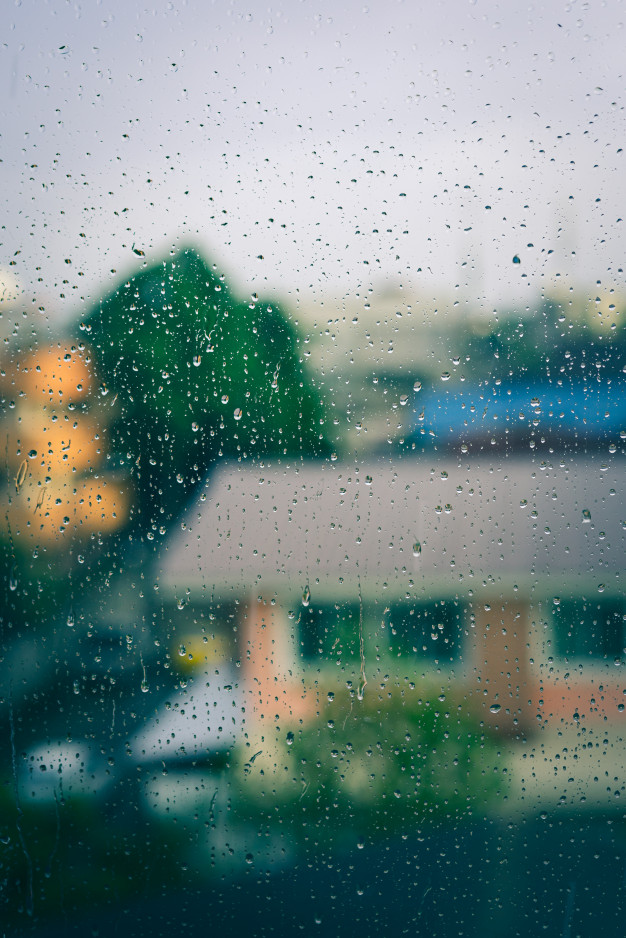Most Americans spend 80-90% of their time indoors. Combine that figure with the trend towards ever more tightly sealed homes and you’ll realize that indoor air quality is more important than ever. The quality of air inside your home is affected by a variety of factors, and there are many potential problems you can encounter, along with a variety of different solutions. In this guide, we’ll examine sources of indoor air pollution and ways you can improve the quality of the air inside your home.
Wildfires fill the air with smoke. Cars and industry cause outdoor quality to reach unhealthy levels. These events create headlines and cause us to take reasonable precautions to protect our health. But what if the real danger is inside our homes?
Most of us spend the majority of our days inside, and much of that inside time is spent in our homes. According to the EPA, the concentration of pollutants inside our homes is often 2 to 5 times as high as in the outdoors. Worse yet, those with significant health issues, and most at risk, typically spend even more time inside. And the push for energy-efficient homes and the common use of central air-conditioning systems means that less fresh air gets into our homes.
Add these factors together and it becomes clear that indoor air quality is a topic that deserves examination. Learning about indoor air quality, examining our homes, and taking steps to improve our home’s internal environment can pay off in decreased exposure to pollutants and improved health.


To understand how to improve your home’s air quality, a good place to start is to understand some of the common types of pollutants that can affect your home. Some of these are obvious and easily detected and fixed. Others are more difficult to detect or may require more extensive action on your part.
Mold
One of the most common indoor air pollutants is mold. While some molds are beneficial (consider cheese and penicillin), mold growing in our homes is a sign of trouble. Molds produce spores that can become airborne and cause respiratory difficulties and other health to those with asthma, weakened immune systems, and allergies. And prolonged exposure to molds can trigger allergic reactions even among those who may not have suffered before.
Household mold issues are caused by moisture, whether in the air or from standing water. Given warm and humid conditions and a source of food, like books, carpets, wallpaper, and more, any home can become a host for mold.
Radon gas
Radon is an odorless, invisible gas that is produced by the decay of uranium in the earth. It can enter your home through cracks in the foundation, and your risk of developing lung cancer increases significantly if radon levels in your home are high. Geologically, Texas is at low risk for high levels of radon gas in the home, but as Texas A & M points out, high levels of radon gas have been detected in Texas homes.
If your home has a basement or below-ground area, you may want to consider testing for radon. In some cases, sealing of your foundation walls is necessary to mitigate radon exposure, but usually, improvements in ventilation will alleviate the problem.
Asthma triggersThose who suffer from asthma understand how air quality issues can trigger attacks. Some of the common indoor air pollution triggers for asthma can include:
All of these triggers are directly related to indoor air quality issues that can be addressed in a systematic and effective way.
Combustion pollutants
One obvious source of combustion pollutants is a fireplace or woodstove. But there are others which may not be as obvious. Combustion pollutants can be produced from gas hot water heaters, stoves, space heaters, and clothes dryers as well. The byproducts of burning fuel can create potentially dangerous pollutants in your home.
It’s wise to have a carbon monoxide (CO) detector in your home, particularly if you have any gas-burning appliances or use fuel-burning space heaters at any time.
Volatile organic compounds (VOC)
Volatile organic compounds are a big category of potential air pollutants found in many common items. These chemicals can build up to irritating levels in poorly ventilated homes. VOCs can be found in:
These chemicals disperse into the air when used and can cause problems like eye, nose, and throat irritation; headaches and nausea, or even damage to the liver, kidneys, and nervous system. Ensure that your home is well ventilated when using VOCs, and avoid storing them in close proximity to living spaces.
Outdoor pollutants
Your home isn’t immune to pollution outside your walls. During wildfires or smog alerts, outdoor pollutants can infiltrate your home and adversely affect indoor air quality. Your best defense from heavy outdoor pollution is to keep your home sealed as well as possible and rely on clean, effective filters to remove particulate matter that enters your house.
Secondhand smoke
Without a doubt, one of the worst indoor air pollutants is secondhand smoke from tobacco. Smoking is a proven cause of lung cancer, emphysema, and other respiratory ailments. Unfortunately, you don’t have to be a smoker to be affected. Secondhand smoke from smokers in your household can affect others as well, so limit smoking to outdoor areas.

Using your eyes and nose is one of the simplest and most effective ways to start getting a handle on potential indoor air quality issues. Perform a visual inspection of your home and note whether you detect any of these issues:
You should also check if all of your home passes the smell test. If certain areas or rooms are stuffy or seem stale. This can often indicate ventilation problems or the beginning of mold growth long before you actually see any evidence.
Another way that air quality issues become evident is through our body’s reaction to the air in our home. If you’re noticing allergy-like symptoms or feel like you’re always fighting a cold during the months when you’re inside, this can be an indication that there are issues with your home’s air quality.
Finally, take a look at your home’s central air conditioning and heating equipment. If the equipment is dirty or dusty or is located in a dusty and dirty area of your home, it could be contributing to problems with your indoor air quality.
As we’ve seen, there are many sources of indoor air pollution. Tackling all of the potential pollutants in your home may seem like a daunting task, but there are some smart steps that you can take to stay in front of potential problems and to address current issues. Some of these are comprehensive, whole-home solutions, while others can address more localized, small-scale issues. Here are some solutions.
Add a UV HVAC filter to your system
If you’re looking for a comprehensive way to improve the air quality in your home, adding a UV HVAC filter is one of the most effective ways to go. Your home’s air can contain many dangers, including air pollutants, VOCs (Volatile Organic Compounds), mold, bacteria, and viruses — including the COVID 19 virus. The best way to tackle these problems is with a whole home UV or LED filter system installed on your home’s HVAC system. Units like the REME HALO UV filter unit effectively tackle a number of issues related to your home’s air quality.
The REME HALO air purifier utilizes proprietary technology that produces a Hydro-Peroxide plasma that circulates throughout your system and your home, purifying pollutants wherever they may be. It’s a safe and natural process ramped up to maximum effectiveness by this technologically advanced and unobtrusive piece of gear.
Here are some of the benefits:
Invest in a whole-home dehumidifier
One of the central themes revolving around indoor air quality is moisture. If the moisture level in your home is too high, it’s not only uncomfortable, but it can also contribute to mold and mildew creation. While you can mitigate the effects of moisture somewhat by using portable dehumidifiers, these units can be noisy, unattractive, and require regular emptying.
A better way to go is to install a whole-home dehumidifier. These units attach to your central HVAC system and work constantly in the background to maintain the humidity level of your home at the level you desire. You’ll not only enjoy a more comfortable home, but you’ll also stay ahead of air quality issues that can be caused by excess moisture.
Improve ventilation
Modern homes are much more tightly sealed than homes have been in the past. That’s good from the standpoint of energy efficiency, and can be useful during allergy seasons as well. But it’s also a good idea to get fresh into your home whenever possible.
Control sources of pollutants
If you store items like paint, pesticides, cleaning supplies, or other chemicals inside your home, you could be contributing to indoor air pollution. These volatile organic compounds can build up in enclosed spaces like storage closets or basements and then seep into your home’s air supply. Be sure that the places where you store these chemicals are well-ventilated. Or better yet, keep as many of them as possible in outdoor storage buildings, away from where you live.
Clean your ducts
Have you had your ducts cleaned recently? Or have you ever had your ducts cleaned? Your ducts can harbor many sources of indoor air pollution, from dust and pet dander to insect and rodent droppings. Regular cleaning of your home’s ducts is a smart investment that can pay real dividends in improving your indoor air quality.
As an added bonus, cleaning your ducts can help remove dust that recirculates around your home. You may find that your regular house cleaning isn’t quite as onerous a task as it has been in the past.
Use the best air filters
Air filters play a vital role in your HVAC system. They remove dust, pet dander, and more from the air and can play a vital role in keeping your indoor air clean. Filters should be changed regularly, and even more frequently if you have pets in your home.
Air filters are rated using MERV, the Minimum Efficiency Reporting Value. The higher the MERV rating, the better the job your filter will do.
Add an attic fan
Attic fans are a great way to save on heating and cooling costs, and they also have the side benefit of keeping your indoor air quality better. A properly installed attic fan will help exchange the air in your home with outside air much more quickly than just opening the windows. This exchange will help flush contaminants out of your home’s air, reducing indoor air pollution.
Use a portable air purifier
A portable air purifier is often a useful alternative to central HVAC air purification systems. It’s important to understand the technology and features of these.
Consider portable dehumidifiers to control humidity
While a whole-home dehumidifier is an excellent investment, and a great way to control humidity throughout your home. You may not have a central HVAC system that supports the installation of one of these units. Or you may have localized issues with humidity in your home that can be best addressed with a portable unit.
Choose a portable dehumidifier based on the size of the area you’ll be placing it in. It’s a smart idea to measure the square footage of the room you’ll be placing it in before you go shopping. And look for useful features like automatic humidity level controls. That way the dehumidifier will only run when you need it to.
Many issues related to poor indoor air quality can be addressed with regular cleaning. Be sure that you do these chores regularly.

test comment